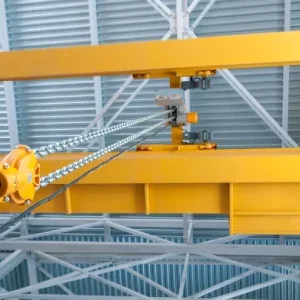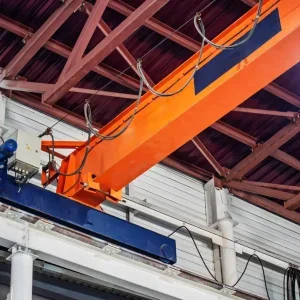Rigging gear hire firms have been hit by a scare when a Lloyds Register document that raised safety questions about flat webbing slings was circulated around the industry. The document has been since found to be misleading.
The alert ‘caused considerable confusion and panic, shall we say’ said Trevor Gregg, specialist inspector with the UK’s regulatory body the Health and Safety Executive in Aberdeen, Scotland.
‘People were worried that there was a fault with all flat woven web slings. The problems were limited to two manufacturers and of those, with one manufacturer it was a particular batch of slings. Both manufacturers could identify where the slings have gone to, and took appropriate action.’ Gregg said both manufacturers have contacted the relevant customers.
‘We had numerous phone calls from customers asking, “What’s happening here? Why are these slings made like this?” We had to tell them that the problems with the construction of the sling as Lloyds had interpreted was incorrect. They found that hard to accept,’ said Paul Auston, managing director of UK sling manufacturer Checkmate Avon. Auston added that the company had not lost any business because of the scare.
In early May, Lifting Gear Hire managing director Simon Butterworth sent a letter to Lloyds Register complaining about the alert and its adverse affect on business. In the letter, the company said it was suffering ‘a loss of revenue through customers ending the hire of flat slings with a short tail overlap,’ plus indirect effects on the business because of loss of confidence and extra load on customer service due to enquiries about the slings, the letter said.
At least one other UK rigging firm has had ‘serious problems’ because of the safety alert, Derrick Bailes, chief executive of the Lifting Equipment Engineers Association, told Hoist.
Derrick Bailes issued a statement about the alert in February. ‘Unfortunately the alert contained some misleading information which, however well intentioned, has given rise to considerable concern amongst users whilst also failing to address the real issues exposed by these failures,’ it said.
The LEEA letter said that flat woven webbing slings made in compliance with the UK and European sling standard, BS EN 1492:1-2000, were perfectly safe.
Lloyds Register in Aberdeen, Scotland issued a safety alert dated 8 February stating that it had found that two-layer reinforced eye (duplex) slings from two manufacturers were fabricated incorrectly. It said they had been tested to destruction and found to have had breaking loads below the minimum 7:1 safety ratio specified by the standard. The first manufacturer’s 6t capacity sling broke at 20.3t and its 5t sling broke at 19.4t; the second manufacturer’s 5t capacity sling broke at 23.2t.
The safety alert linked the failures to the slings’ construction: ‘A duplex sling has a “short tail” and a “long tail.” The correct fabrication method is to have the short tail captured between the long tail and what would be the single layer of a simplex sling.’ It further advised users to ‘check the fabrication method and if the incorrect manufacturing technique is found, return it immediately to the supplier.’
In the LEEA letter, Derrick Bailes refuted these statements. ‘The safety alert was incorrect in suggesting that the position of the short tail contributed to the failures,’ he said. ‘The standard does not require the short tail of a sling to be located in a particular position relative to the eyes.’
When contacted this month, the Lloyds Register department that issued the safety alert read a statement from the company’s legal department. The statement said: ‘We have been told by the HSE that the two manufacturers being investigated by the HSE for producing non-compliant flat webbing slings have now identified the suspect batches of slings, contacted their customers and made arrangements to replace any suspect slings. Therefore Lloyds Register EMEA is not currently making any recommendation in relation to these slings.’






